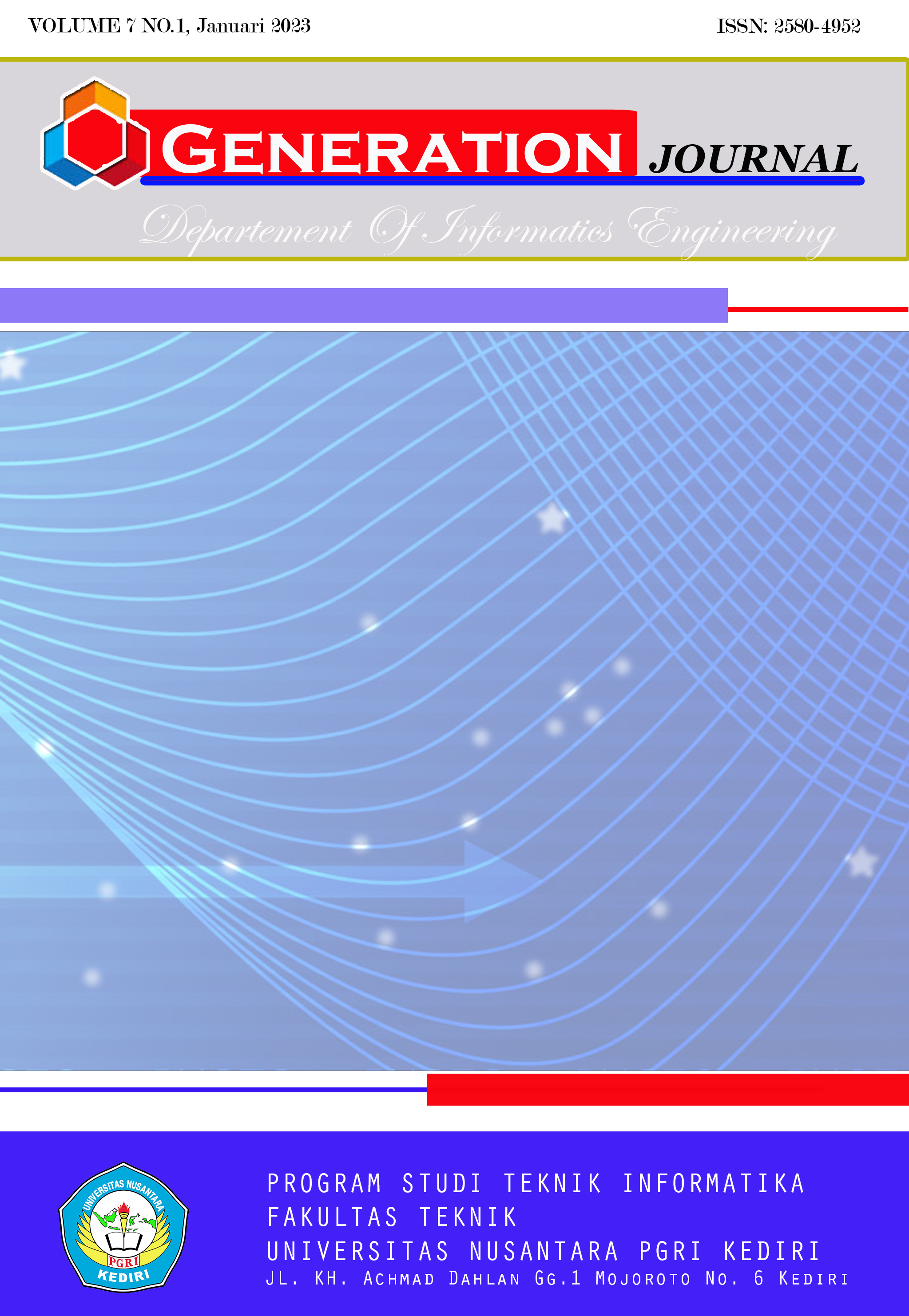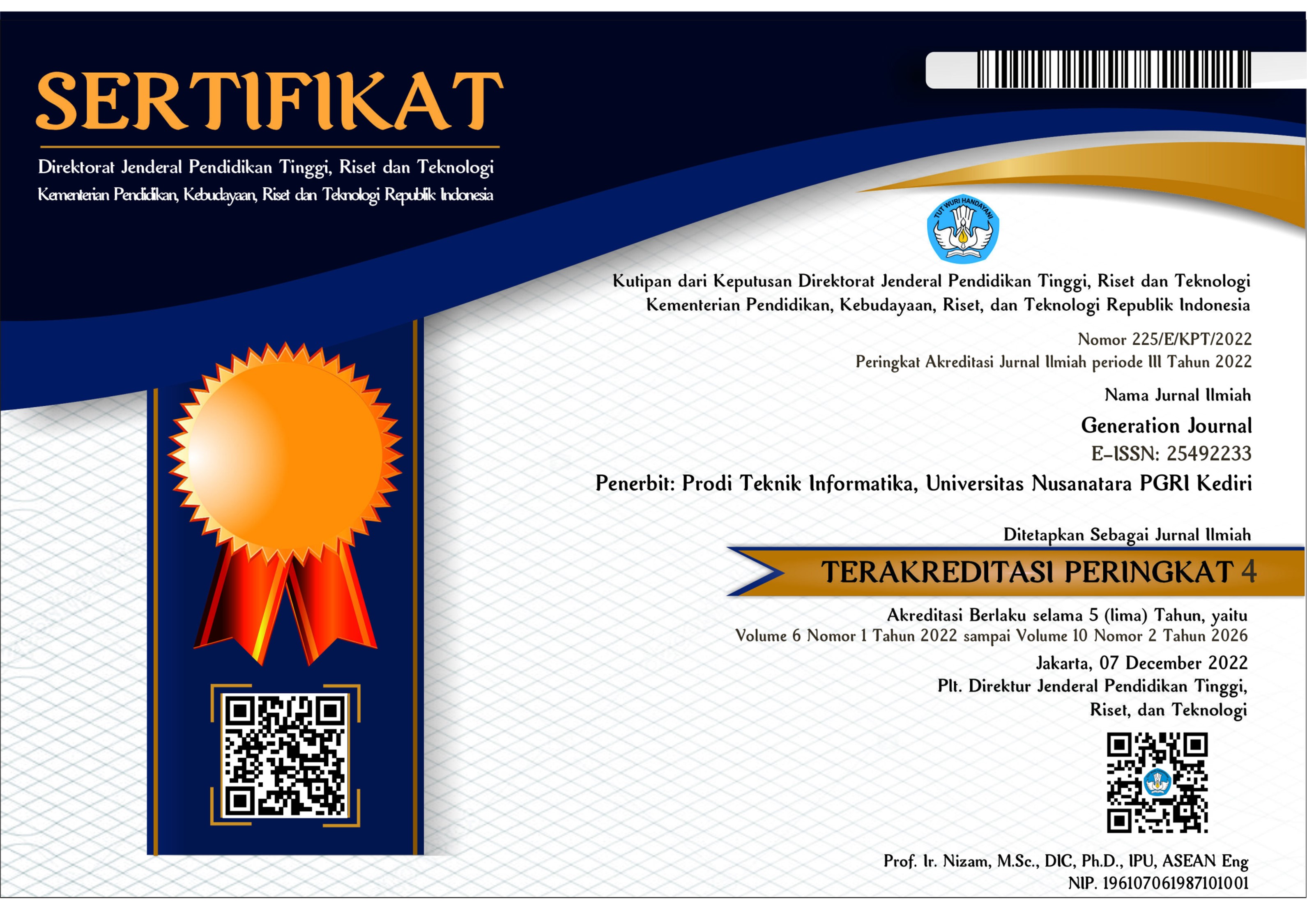Implementasi Web Content Filtering Pada Jaringan RT/RW Net Menggunakan Pi-Hole DNS Server
DOI:
https://doi.org/10.29407/gj.v7i1.19818Keywords:
DNS Server, Internet, Mikrotik, Pi-Hole, Web FilteringAbstract
Penggunaan jaringan RT/RW Net supaya lebih maksimal perlu menerapkan keamanan jaringan yaitu dengan menerapkan Pi-Hole DNS Server untuk memfilter website negatif dan iklan yang tidak diinginkan. Hal ini sesuai dengan program yang dicanangkan oleh Pemerintah (Kemkominfo) yaitu penggunaan internet yang sehat dan aman. Tahapan penelitian yang digunakan adalah identifikasi masalah, studi pustaka, implementasi, pengujian dan analisis hasil atau penarikan kesimpulan. Menghasilkan penelitian bahwa penerapan Pi-Hole DNS Server terhadap topologi jaringan RT/RW Net berhasil dilakukan terbukti dapat memfilter atau menyaring website yang mengandung situs-situs negatif dan dapat memblokir iklan yang tidak diinginkan, keberhasilan dalam memfilter tersebut dikategorikan 100% efektif, serta kualitas jaringan setelah penerapan Pi-Hole DNS Server dikategorikan baik dalam metode pengujian QoS
References
A. M. Zakiyyah and M. Rahman, “Internet Service Provider (ISP) RT-RW NET,” J. Pengabdi. Masy. Ipteks, vol. 7, no. 1, pp. 30–36, 2021.
Wearesocial.com, “Digital 2022 Indonesia February 2022,” 2022. https://datareportal.com/reports/digital-2022-indonesia (accessed Nov. 13, 2022).
W. Setiawan, “Era Digital dan Tantangannya,” in Seminar Nasional Pendidikan, 2017, pp. 1–9.
Admin, “Internet Sehat dan Aman (INSAN),” Web Kemkominfo, 2013. https://www.kominfo.go.id/content/detail/3303/internet-sehat-dan-aman-insan/0/internet_sehat (accessed Nov. 16, 2022).
Y. Sopyan, “Membahas Cara Kerja Pi-Hole,” Labkom.co.id, 2020. https://labkom.co.id/mikrotik/membahas-cara-kerja-pi-hole (accessed Nov. 14, 2022).
W. Mukti and R. Widyarini, “Web Content Filtering,” 2013. https://keamanan-informasi.stei.itb.ac.id/2013/10/30/web-content-filtering/ (accessed Nov. 17, 2022).
O. Abdurahman, T. U. Kalsum, and Riska, “Penerapan Pi-Hole DNS Server Sebagai Ads-Blocker dan Sistem Filtering Website Pada Jaringan Hotspot,” J. Media Infotama, vol. 18, no. 2, pp. 208–217, 2022.
I. S. Ali, S. Hamza, and E. Gunawan, “Implementasi & Analisis Penerapan Pi-Hole Network Ad-Blocking Di Laboratorium Jaringan Teknik Informatika UMMU,” J-TIFA, vol. 3, no. 1, pp. 27–31, 2020.
E. Putra and R. A. Bugis, “Implementasi Hotspot dengan User Manager untuk Internet Wireless menggunakan Mikrotik RB-951ui di SMK Swasta Al-Washliyah Pasar Senen 2 Medan,” J. Teknol. Inf., vol. 3, no. 1, pp. 58–65, 2019, doi: 10.36294/jurti.v3i1.689.
S. Iwan, Jaringan Komputer Berbasis MikroTik. Bandung: Informatika, 2017.
R. Wulandari, “Analisis QoS (Quality Of Service) Pada Jaringan Internet (Studi Kasus : UPT Loka Uji Teknik Penambangan Jampang Kulon–LIPI),” J. Tek. Inform. dan Sist. Inf., vol. 2, no. 2, pp. 162–172, 2016, doi: 10.28932/jutisi.v2i2.454.
T. Pratama, M. A. Irwansyah, and Yulianti, “Perbandingan Metode PCQ, SFQ, RED dan FIFO Pada Mikrotik Sebagai Upaya Optimalisasi Layanan Jaringan Pada Fakultas Teknik Universitas Tanjungpura,” J. Tek. Inform. Univ. Tanjungpura, vol. 3, no. 1, 2015.
M. Huda and Jusak, “Analisis Karakteristik Lalu Lintas Data Internet: Aplikasi Web Social Network,” J. Control Netw. Syst., vol. 4, no. 2, pp. 102–112, 2015.
Downloads
Published
Issue
Section
License
Authors who publish with this journal agree to the following terms:
- Copyright on any article is retained by the author(s).
- The author grants the journal, the right of first publication with the work simultaneously licensed under a Creative Commons Attribution License that allows others to share the work with an acknowledgment of the work’s authorship and initial publication in this journal.
- Authors are able to enter into separate, additional contractual arrangements for the non-exclusive distribution of the journal’s published version of the work (e.g., post it to an institutional repository or publish it in a book), with an acknowledgment of its initial publication in this journal.
- Authors are permitted and encouraged to post their work online (e.g., in institutional repositories or on their website) prior to and during the submission process, as it can lead to productive exchanges, as well as earlier and greater citation of published work.
- The article and any associated published material is distributed under the Creative Commons Attribution-ShareAlike 4.0 International License














